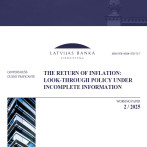The steepest decrease in salaries in state administration
Salaries and wages are continuing to drop in all branches of the economy. According to data of the third quarter of 2009, the hourly wage has shrunk by 6.4% over the course of the year. The decrease in labour payment fund amounts to 30.6% and is the result both of the drop in payment for labour and the reduction of the number of man-hours by 25.9%. The reduction in the number of man-hours was determined both by a smaller number of employees and the contracted length of the working week.
As the trend of the first six months continued, the labour costs in the private sector decreased primarily on account of laying off employees as well as reducing the length of the working week. The drop in the number of worked man-hours has been the steepest in construction and processing industries (50% and 33%, respectively). Both the statistics and results of a survey conducted by the personnel management consulting firm Fontes indicate that the tendency in the private sector is to keep on the best employees and to base pay changes more on the individual performance of the employee. Even though it means a greater increase in unemployment, the workforce is more motivated to develop their professional skills and be more interested in the development of the business.
In the public sector, the labour payment fund has been reduced primarily by reducing the average hourly wage. The average hourly payment has decreased more rapidly in state administration, by 21.5%, with the labour payment fund contracting by 31.5%. This allows the budget funded institutions to reduce costs by cutting the number of employees less than in the private sector and thus slowing down the rise in unemployment.
In view of the high flexibility of the Latvian labour market –the opportunities for cutting wages are greater than in the majority of Western European countries –, it is expected that in the next few quarters the hourly wage will continue to decrease, thus restoring business competitiveness in foreign markets and domestically. Compared to the alternative, cutting labour costs by laying off employees, this is the better scenario.
Textual error
«… …»






